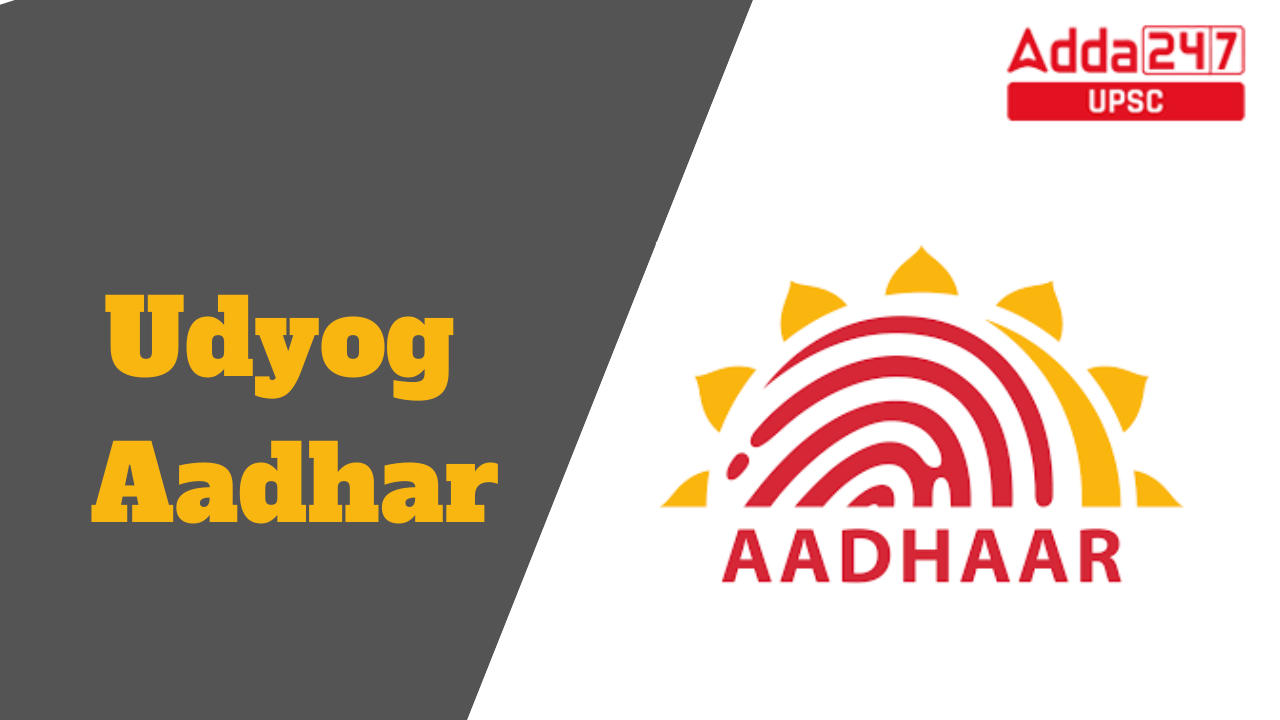Table of Contents
The Udyog Aadhar memorandum is an Indian registration process designed to support the development of micro, small, and medium enterprises (MSMEs). It grants a distinctive identity to these enterprises, enabling them to access various government benefits and subsidies. The memorandum includes crucial information such as the enterprise’s name, organization type, location, and bank account details, streamlining the registration process for MSMEs and encouraging their involvement in government schemes and programs.
This article will provide information on the Udyog Aadhaar Memorandum (UAM), its significance, and its principal attributes. It aims to provide valuable insights for individuals preparing for the IAS Exam.
What is Udyog Aadhar?
Udyog Aadhar was launched on 18 September 2015 by the government of India under the Ministry of MSMEs and is also known as the Udyam Registration program. It provides a 12-digit unique identification number and certification to MSME enterprises. Launched to simplify business registration, it’s a completely free online process with minimal requirements.
By registering, Micro, Small, and Medium enterprises gain access to a range of benefits including easier loans, government subsidies, participation in government projects, and tax exemptions. The Udyog Aadhaar Registration can be completed through online mode at the official site.
Udyog Aadhar Memorandum
The term “Udyog Aadhar Memorandum” (UAM) is no longer the current term for MSME registration in India. It has been replaced by Udyam Registration. Previously, the UAM was a single-page online form used for self-declaration of your MSME’s existence. You would fill out details like your Aadhaar number, business information, and bank details on the UAM.
However, the Udyam Registration process maintains the essence of the UAM by being a completely online, self-declaration-based registration with no documents required. While you won’t encounter the UAM term anymore, understanding its role helps navigate the current Udyam Registration process.
Benefits of Udyog Aadhar
- Registered businesses benefit from significant excise benefits, enhancing competitiveness and enabling cost savings.
- Udyog Aadhar-certified enterprises have access to a credit guarantee scheme, providing financial security and facilitating access to credit facilities.
- Registered businesses enjoy exemptions from certain provisions of direct tax laws, reducing their tax burden.
- Udyog Aadhar-registered enterprises receive concessions on electricity bills, leading to cost savings.
- Upon registration, businesses become eligible for various government schemes, including easy loans, non-guaranteed loans, and low-interest rates.
- Udyog Aadhar-registered enterprises receive financial assistance and other benefits when participating in foreign expos or trade fairs.
Eligibility For MSME Udyog Aadhar
Business entities categorized under the Micro, Small, and Medium Enterprises (MSME) classification are entitled to register under Udyog Aadhar. The categorization of MSMEs is determined by investment and turnover criteria as outlined below:
- Micro Units: Investment should not surpass Rs 1 crore, with turnover less than Rs 5 crore.
- Small Units: Investment should not exceed Rs 10 crore, with turnover less than Rs 50 crore.
- Medium Units: Investment should not exceed Rs 50 crore, with turnover less than Rs 250 crore.
Udyog Adhar Registration Process
Udyam Registration is a quick and convenient way for Micro, Small and Medium Enterprises (MSMEs) to register with the Government of India. Ensure you have a valid Aadhaar number. This is mandatory for registration. Gather basic details about your business, such as name, type of organization (proprietorship, partnership etc.), business activity, and estimated number of employees.
Here’s a step-by-step guide for the online registration process:
- Visit the official Udyam Registration website of the Ministry of MSME: udyamregistration.gov.in
- Click on the option “For new entrepreneurs who are not registered yet as MSME”.
- Enter your Aadhaar number and name exactly as per your Aadhaar card.
- Click on “Validate & Generate OTP”. An OTP will be sent to your Aadhaar-linked mobile number.
- Enter the OTP and click on “Validate”.
- You’ll be directed to a form. Fill in the details about your business, including:
-Business name
-Type of organization (Proprietorship, Partnership etc.)
-PAN (if applicable)
-GSTIN (if applicable for companies, LLPs etc.)
-Business activity (select from NIC code options)
-Bank details
-Number of employees
-Date of commencement etc. - Review your entries carefully to ensure accuracy.
- Click on “Submit” to complete the registration process.



 Attorney General of India UPSC Notes (Ar...
Attorney General of India UPSC Notes (Ar...
 Election Laws in India UPSC Notes
Election Laws in India UPSC Notes
 Indian Parliamentary Forums UPSC Notes
Indian Parliamentary Forums UPSC Notes




